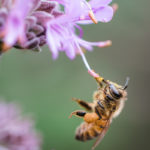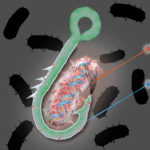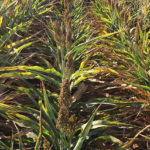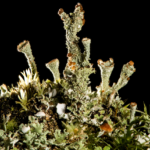In 2018, JGI embarked on a pilot project with biology students from Boca Raton Community High School in Palm Beach County, Florida. The class sought to apply the latest molecular techniques to learn more about the microbial communities in the Arthur R. Marshall Loxahatchee National Wildlife Refuge, a 226-square mile area of the northern Everglades in Palm Beach County, and particularly about the microbes that play roles in the methane cycle. Their data report, which provides the only known reference microbiome data sets for the Loxahatchee Refuge, was published in the journal Environmental Microbiome. Read more on the JGI website.
JGI Helps Analyze Division of Labor in Bee Gut Genomes
Honey bees are invaluable pollinators — cupids of the plant world facilitating the remixing of genes in the next generation of flowering vegetation. In return for their services, bees eat plant nectar and pollen. Nectar is an easily absorbable solution of sugars, but pollen contains plant cell walls, which have complex, branching chains of polysaccharides called pectin and hemicellulose. Honey bees rely on their gut microbiota to produce these enzymes to break down polysaccharides. An international team of researchers including JGI scientists has identified the major metabolic roles of constituent microbes. Read more on the JGI website.
JGI Develops “Hook and Bait” Single-Cell Genomic Approach to Bioprospecting
One of the most vital pieces of equipment for fly fishing is a boxful of lures. Designed with feathers or wires to mimic an insect or a particular movement, each of these lures are the bait designed to attract specific catches. A similar “hook and bait” technique has been developed by researchers led by JGI Microbial Program Head Tanja Woyke. Using a single-cell screen, they can now identify microbes with specific functional characteristics. When they tested the screen method on a microbial community from geothermal hot springs, they uncovered a novel cellulose-degrading bacterium typically found in low abundances. Read more on the JGI website.
JGI Team Helps Uncover Sorghum’s Secrets for Drought Tolerance
Sorghum bicolor (L.) Moench is an African grass that adroitly handles droughts, floods and poor soils. While sorghum is drought-tolerant, the crop’s precise response is dependent on when exactly water becomes a limiting factor – before or after flowering. Reported in PNAS the week of December 2, 2019, is the first paper that describes sorghum’s response to drought, from a large-scale field experiment led by a multi-institutional consortium to uncover the mechanisms behind sorghum’s capacity to produce high yields despite drought conditions. Read the full highlight on the JGI website.
JGI Helps Illuminate Microbial Partnership In Lichen
The humble lichen is a superorganism: one being that is actually comprised of two major participants. One partner is a fungus; the other is a photosynthetic microbe, tucked in the fungus’ tissue. The two live intertwined, with the photobiont transferring part of its photosynthetically fixed carbon to the mycobiont — a strategy that has worked so well, that lichen are the dominant carbon and nitrogen fixers alpine and high latitude systems. However, despite a century-and-a-half of lichen research, many of the symbiosis’ details remain unclear. For the first time, a team has analyzed in parallel the genomes and transcriptomes of both partners to better understand lichen. Read the science highlight on the JGI website.
- « Previous Page
- 1
- …
- 20
- 21
- 22
- 23
- 24
- …
- 46
- Next Page »
Was this page useful?



